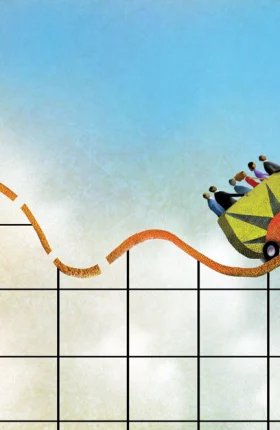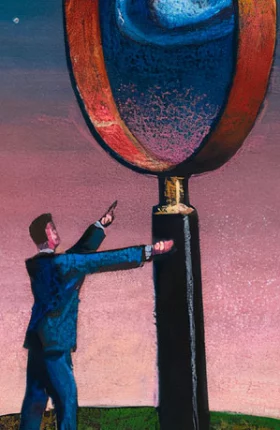There’s something heroic about a CEO who parachutes into a company that’s facing an existential threat. While such turnarounds are never really a one-person show, it’s the CEO’s boldness and resolve that invariably stand out. They get the credit and the cover story.
But just as impressive, if not as celebrated, is the CEO who upends the status quo when all is (seemingly) well. Such efforts, I believe, require at least as much leadership, tenacity, and vision. They may not seem as miraculous or necessary as a change-or-die turnaround—until you consider how hard it is to instill a hunger for change in a successful company, and what’s on the line when complacency sets in.
Picture the new CEO walking into a historically successful company. This CEO often inherits an organization with an excellent balance sheet, a good reputation, strong market positions—and almost no appetite for broad change.
These organizations tend to be highly self-confident. They are convinced they have the winning model and the best people. Senior executives have received tremendous affirmation, sometimes over decades. Ingrained patterns of behavior have been rewarded over and over again. Internally, silos get built, staffing levels grow, and politics intensify. Self-criticism is often muted. With so much success for so long, what’s the point of being too harsh, anyway?
But the borderline between confidence and complacency is thin. Over and over, historically strong companies have slipped into periods of decline, sometimes precipitously. In fact, the life expectancy of public companies is shorter than ever.
So how can the leader of a successful business reset the direction and re-energize the organization before a crisis hits? Every situation is different, but here are some elements that cut across many of those who succeed:
- Confront reality. A former BCG partner who worked for Jack Welch, former chairman and CEO of GE, told me that he thought Jack's most important quality was that he forced his leadership to deal with the world as it is, not as they wished it to be. Using the right yardsticks and benchmarks, asking challenging questions, and conducting follow-up reviews on new products or initiatives are all examples of pushing strong organizations outside of their inherent comfort zones.
- Establish “the fierce urgency of now.” Martin Luther King, Jr., said this in a completely different context, but the imagery is exactly right. Strong organizations find all sorts of reasons to avoid uncomfortable change. Pace and energy go together. With competitive landscapes being reshaped faster than ever, the leader needs to set the agenda and the tone.
- Avoid the false security of “a safe pair of hands.” Indra Nooyi, chairman and CEO of PepsiCo, shared this in a workshop with new CEOs as her number-one lesson. Executives who are solely a safe pair of hands are there to preserve the past, not invent the future. To successfully lead their organizations forward, CEOs should challenge their leaders to become change drivers. Many will step up in unexpected ways. I’ve seen skeptics turn into true champions of change. But over time, tolerating those who simply want to preserve the status quo, even if they do their jobs well, sends debilitating signals to everyone else.
- Tackle organizational sclerosis. Many successful organizations face two related challenges. First, they are hardwired to be slow and bureaucratic, with too many layers and too narrow spans of control. So leaders get distant from the business, decisions take longer, and strong performers feel overmanaged and underempowered. Second, collaboration often deteriorates as individual success begins to outweigh team success, particularly in activities that cross boundaries within the business. Designing organizations to be lean and creating an environment that fosters the right behaviors and interactions can provide a burst of energy and effectiveness.
To make these changes stick, leaders will need to win the hearts and minds of a range of stakeholders—employees, customers, investors, and, increasingly, regulators—so they appreciate why it’s worth challenging the status quo.
This isn’t just about staving off decline. It’s about creating a healthy sense of restlessness, motivating people to experiment and act differently, and getting the company, as a whole, to move at a much faster speed—to be more adaptive and agile.
Leaders who turn around successful companies rarely create shocking headlines, but they can create massive value. Take two former CEOs, Frank Blake of The Home Depot and Lamberto Andreotti of Bristol-Myers Squibb. Both inherited strong companies, and both still managed to reset the direction and strengthen their positions, adding around $200 billion of shareholder value between them in the process.
It takes a special kind of leader to deviate from a tried and true road—and bring a confident, successful organization along on the journey.
A version of this article
first appeared
on
Fortune.com
.






